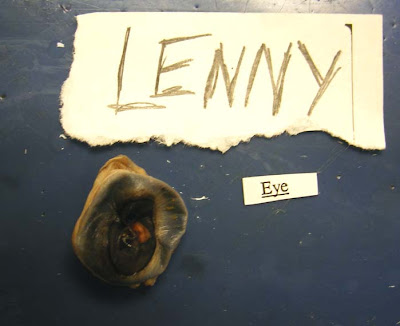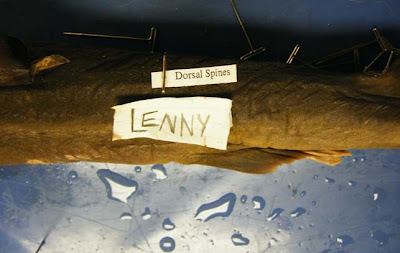The following are the names and functions of the
Digestive System: Mouth- Where food enters the digestion system.
Esophagus- Used to transport food from the mouth to the cardiac stomach.
Cardiac Stomach- Digests food, which then travels to the pyloric stomach.
Pyloric Stomach- Second stomach that breaks the food down further.
Rugae- Gives the stomach greater surface area.
Liver- Makes bile, which is used for digestion.
Cardiac Sphincter- Separates cardiac stomach from pyloric stomach.
Pyloric Sphincter- Transfers food into small intestine from pyloric stomach.
Mesentery- Holds digestive organs together.
Gall Bladder- Stores extra bile.
Common Bile Duct- Transfers bile to digestive organs.
Pancreas- Makes digestive enzymes.
Duodenum- Small tube in the intestines that the gall bladder and pancreas empty in to for further digestion.
Ileum- Absorbs nutrients from food.
Spiral Valve- Lets the illeum increase in size.
Colon- Absorbs water.
Rectum- Absorbs water.
Cloaca- The digestive tract's exit.









































































